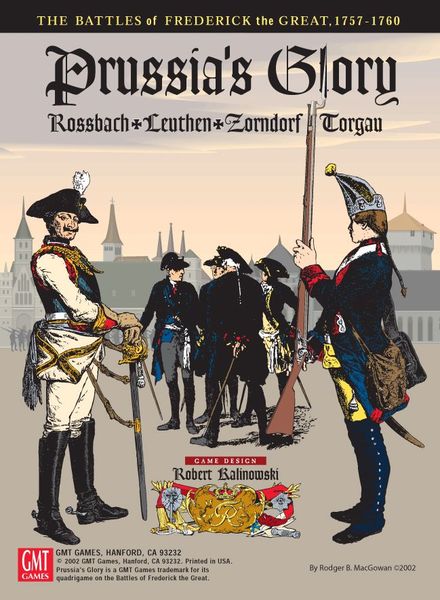Prussia’s Glory: The Battles of Frederick the Great (2002) Board Game
Prussia’s Glory: The Battles of Frederick the Great is a wargame that focuses on the military campaigns of Frederick the Great, the King of Prussia, during the 18th century. Designed by Rodger B. MacGowan and Mark Simonitch, this game allows players to reenact historical battles from this era using a hexagon grid system.
Game Components of Prussia’s Glory: The Battles of Frederick the Great
How To Setup Prussia’s Glory: The Battles of Frederick the Great
Setting up the game involves placing the armies in their historical deployments. The game includes Short Battle Scenarios and Main Scenarios. For the Main Scenarios, players can recreate or alter their army’s critical approach marches to the field, which significantly changes deployment possibilities. Each battle scenario, such as Rossbach, Leuthen, Zorndorf, and Torgau, has its unique setup and historical context.
Gameplay Mechanics and Game Objective
Player Experience
Playing **Prussia’s Glory** immerses you in the tactical and strategic decisions of Frederick the Great during the Seven Years’ War. The game requires strategic thinking, especially in pre-battle maneuvers and the use of artillery. Players must balance the historical accuracy of the battles with the flexibility to alter deployments and strategies. The game’s medium complexity makes it accessible to wargaming enthusiasts while still offering deep tactical engagement.
Pros
Cons
Personal Thoughts on Prussia’s Glory: The Battles of Frederick the Great
**Prussia’s Glory** is ideal for wargaming enthusiasts and history buffs, particularly those interested in the Age of Reason and the military strategies of Frederick the Great. It offers a balanced blend of historical accuracy and tactical flexibility, making it a compelling choice for players who enjoy strategic depth and historical immersion. However, it may not be the best fit for casual gamers or those new to wargaming due to its specific mechanics and longer playtime.
We are supported by our audience. When you purchase through links on our site, we may earn an affiliate commission, at no extra cost for you. Learn more.

